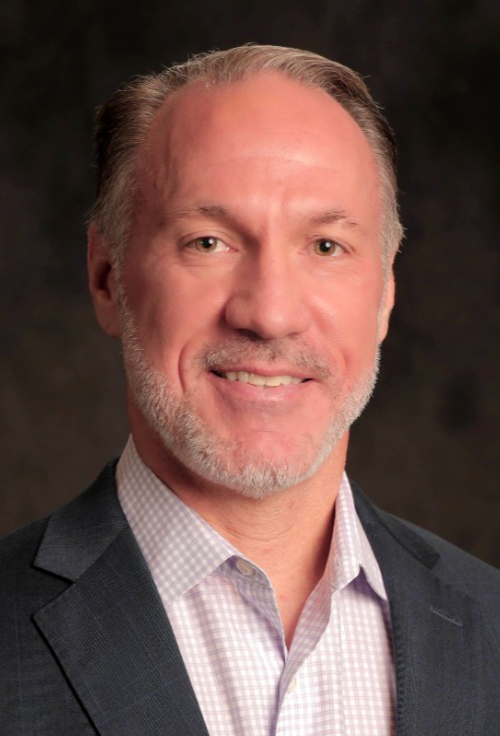In many parts of the Asia-Pacific, numerous enterprises have yet to harness automation to transform their business. Some haven’t even digitised their records, some of which date back decades.
Kofax, which began as an optical character recognition (OCR) company and has since evolved into an intelligent automation solutions provider, is no stranger to this scenario. As history has shown, those unwilling or unable to keep pace with technological shifts will soon become obsolete.
But how exactly is intelligent automation reshaping the future of organisations? To shed some light on this, Frontier Enterprise sat down with Chris Huff, Chief Growth Officer of Kofax, for an exclusive, two-part interview.
In this first part, the discussion delves into Huff’s journey and the evolution of Kofax.
Firstly, could you share a bit about your background? You served in the US Marine Corps for a couple of decades, then moved to Deloitte, and subsequently Kofax. Could you describe your journey transitioning between these organisations?
I believe what most of us want out of life is to look back at the end and say, “That was a rich, fulfilling life.” For me, that means I love different experiences, and that’s what enriches me. My first foray was all about public service. I wanted to give back, and I never thought it would be two decades’ worth of giving back. It was supposed to be just four years, but it just evolved. I gained a lot from this experience, particularly in terms of leadership, teamwork, camaraderie, and mission accomplishment— a lot of the intangibles of leadership.

I was able to parlay all of that into retirement after 20 years, transitioning into running a business at Deloitte— the automation practice in the US, primarily focused on the public sector. This was a five-year stint and a completely new experience for me. During this time, robotic process automation (RPA) and intelligent document processing were already in existence, but RPA was still emerging. I had the opportunity to build this as a new practice at Deloitte Consulting. This was interesting because I worked with several vendors, one of which was Kofax. Then, Kofax was acquired by private equity firm Thoma Bravo in July of 2017.
Private equity firms have a blueprint for value creation. They typically address the cost side of the equation and then shift into growth mode. The first approach is organic, which involves positioning the company and its assets optimally in the marketplace; the second is inorganic, involving mergers and acquisitions. This usually happens about six to 12 months after the initial acquisition. They reached out to me, and we discussed how I could potentially help, given my experience building the RPA practice at Deloitte. Kofax was beginning to emerge as an RPA player, but they also had other solutions, so they didn’t quite know what their identity was.
I joined the team, and one of the first things I was able to help with was building a unified identity around intelligent automation, rationalising the technologies within the portfolio, and setting us on a course that had a true north. I believe we’ve stuck pretty closely to that blueprint for the last five years since I’ve been here.
Could you go a little bit into the history of Kofax, especially the company’s rebranding or realignment from being a sort of OCR document management vendor to a broader RPA-focused one?
Kofax has been on a four-decade journey since 1985. It was established as an OCR scanning-type company, which was relevant in the mid-80s. However, the world moved on, and Kofax’s unique identity, our DNA if you will, is the ability to evolve with the market. Kofax spent the first decade or so primarily focused on OCR, which is more about focusing on data and ingesting it into an organisation. However, it quickly became apparent that there was a lot of unstructured data. This unstructured data was very difficult to transform into standardised structured data— the machine-readable ones and zeros that enable data to flow throughout an enterprise and its various applications. So, Kofax evolved into this transformation capability, which is our proprietary AI algorithms that convert unstructured data into structured data.
As our DNA began to branch out into adjacencies, we started to acquire a lot of different technologies. If you look at our history, we’ve probably made over two dozen acquisitions. This allowed us to take on acquisitions like the old Singularity company about 15 years ago, which was focused on business process management. This was less about just bringing in data; it was about how we can help that data flow throughout an organisation, and that was business process management/workflow.
Making that acquisition allowed Kofax to go deeper into the enterprise business and service customers in many different ways. For RPA, there was also an acquisition of a company called Kapow, out of Denmark. Then came the analytics acquisition, and we made four acquisitions in just the last two years. This is what has really allowed us to broaden the portfolio.
When I joined five years ago, my job was to rationalise that portfolio because Kofax had evolved into several different identities. Was Kofax a capture company? A BPM company? An RPA company? So, we decided, “We are an intelligent automation company.” We have complementary automation solutions on our intelligent automation platform, but at the backbone of it is workflow.
So, TotalAgility is the name of the product that we have. TotalAgility came through the Singularity acquisition, and everything else that we have, like RPA, our analytics, our electronic signature— all are complementary. If you think about a workflow, sometimes you need to electronically sign a document, or sometimes you have a task that needs to be completed within an end-to-end process, and that’s where RPA fits. So, the puzzle pieces came together through multiple acquisitions.
How do you see Kofax evolving in the future?
I believe the natural evolution of technology is to converge technologies. Typically, this convergence lowers the total cost of ownership for the end user and enhances their experience, as long as the technologies come together seamlessly. So that is intelligent automation. Most of the analysts, from Gartner to Forrester to IDC, define intelligent automation as a collection of automation technologies— and there are about six of them. Most analysts have rallied around about six different technologies that need to come together to create this intelligent automation platform. Intelligent document processing is just one, RPA is another, and then there are four others.
That’s what gives us the strength, in terms of being a vendor that can bring intelligent automation to market, because we made the acquisition of most of these, and we just needed to bring them together. And bringing them together means two things:
- One, the aesthetics. Because they came through different acquisitions, they look different, and they have different code bases. So we needed to reskin all of the technologies so that they look like they belong together, just like Microsoft Office Suite. Whether it’s PowerPoint, or Excel, they just look like they belong together, and then data free-flows between the two.
- The second piece, and the most important one, is the bi-directional communication. So RPA could trigger workflow, and workflow can trigger RPA, which is very important because some enterprises will start with RPA, and then they’ll get to workflow. Meanwhile, others will start with workflow. So that bi-directional communication was really important to make it feel like a platform, and so customers could pick their path to the platform.
The second part of this exclusive interview with Chris Huff, Chief Growth Officer of Kofax, can be read here.
















